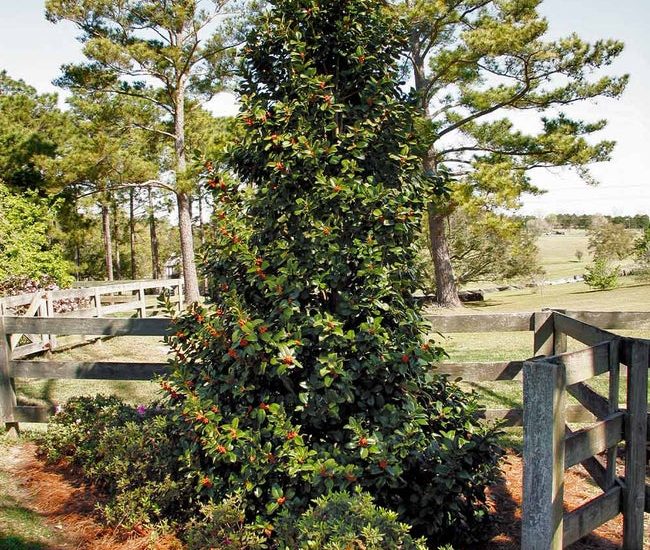Best Evergreen Trees to Plant in Missouri
We refer to trees with needle-like leaves that remain green all year round as "evergreens." Pines, spruces, hemlocks, and true firs are included in this group. Even though evergreens have year-round leaves, they also constantly lose their needles. Some trees with needle-like leaves are deciduous, most notably the yew and larches. Every year, they lose their leaves and grow new ones in the spring. It is clear from the name that they are not evergreens.
Evergreens produce cones with scale-covered seeds. Birds, rabbits, squirrels, chipmunks, coyotes, and even black bears and squirrels eat the seeds. When significant snowfalls obliterate more preferred food sources, deer nibble on evergreen twigs and needles.
Evergreens also support people throughout the gloomy winters. Evergreen trees were thought to have mystical properties by pre-Christian cultures. People brought evergreen trees and branches inside at the winter solstice to safeguard their homes until springtime regrowth. Christianity replaced older Pagan religions, but the custom of bringing evergreens indoors persisted. Nowadays, using evergreens in Christmas decorations is almost universal. For many, the smell of pine alone conjures up a lifetime's worth of holiday memories. It keeps alive the hope of springtime rebirth.
15 Evergreens to Grow in Missouri
Needled evergreens, sometimes called narrow-leaved evergreens or conifers, are planted for their evergreen leaves. But their appeal is further boosted by the variety of sizes, shapes, and colors offered.
Conifers come in various sizes, from small trees to prostrate plants that are barely a few inches tall. Shapes include weeping and distorted forms, flat, groundcover kinds, horizontal spreaders, and erect pyramidal forms. The color of the foliage varies from a variegated pattern of gold and cream to all nuances of green, gray-green, and blue-green.
The main reasons for harm or death in needled evergreens include poorly drained soil, planting too deeply, and winter drying. Most are quickly destroyed by water that is left at their roots. They need to be planted on soil that drains well. Planting on very damp locations could benefit from a raised bed.
Plant an evergreen by raising the soil ball a few inches above its nursery height. Make the planting hole 1 foot wider than the soil ball in diameter. Backfill the plant's surrounding area with quality topsoil after it has been installed. If good topsoil is unavailable, add 25% of compost, peat moss, or other organic material to the current soil to create an acceptable replacement.
Here is the list of 15 evergreens to grow in Missouri.
Pines
The needle-like leaves of pines are generated in bundles of two to five needles, making them easy to recognize from other evergreens. Pine trees can be utilized as specimen trees, windbreaks, screens, and mass plantings. They require full sunlight to grow properly. In Missouri, a variety of pine species can be grown. The five species that are discussed in the next section, though, are those that are most frequently cultivated as ornamentals. Four of these species can develop into tall trees. The other is a shrub called a Mugo Pine.
White Pine
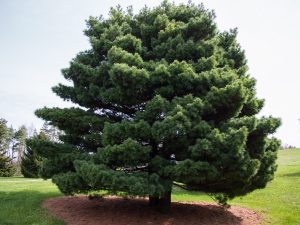
The white pine is a beautiful evergreen tree with delicate, silky, pale bluish-green leaves. The fact that it is the only five-needled pine typically grown makes it simple to identify. White pine grows quickly and is simple to transplant. It needs enough space to grow properly because it will eventually become a giant tree.
White pine occasionally grows too quickly in good places to maintain its dense foliage. Cutting the tree to increase its density, can be prevented. When pruning white pine, note that needle production is not uniform along the stem but concentrates near the tip. The twig will die back to its previous year's growth if the tip is cut back, so some needles must be left on the remaining piece. The air pollution affecting white pine is delicate. Consequently, growing it in urban settings is not a wise decision.
Austrian Pine
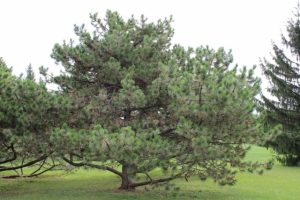
Austrian pine produces long, stiff needles in bundles of two. The plant is perfect for a backdrop for small trees with brilliant flowers or attractive fruit because of its rich, dark green color. Austrian pine grows to be a large tree and requires enough space to expand. It can thrive on various soil types and is comparatively resistant to air pollution. However, it is prone to the dangerous fungal disease tip blight.
Scotch Pine
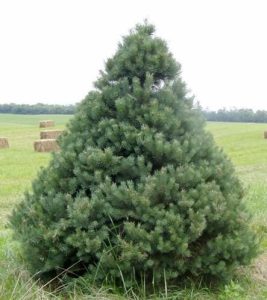
Short, twisted needles formed in bundles of two distinguish Scotch pines from other types of trees. They are frequently raised to make Christmas trees. As they grow older, Scotch pines change from having a symmetrical pyramidal shape to having an open, scenic growth habit. On the higher branches of mature specimens, a reddish-orange flaking bark develops. Pine wilt, a lethal disease, can affect Scotch pine trees. Additionally, pine needle scaling and needle blights are frequent problems for it.
Japanese Black Pine
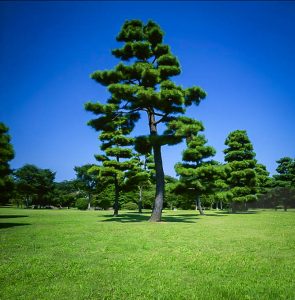
Japanese black pine produces two-needle bundles that are strong, dark green, and range in length from 3 to 5 inches. It may be distinguished from most other pines because of its enormous, grayish-white terminal buds.
Because of its informal growing behavior, Japanese black pine has become more and more popular in recent years. Although it is not well suited for bulk planting, its uneven growth pattern makes it a good accent or specimen plant for use in informal landscapes. This type of pine has been known to be vulnerable to the illness of pine wilt in Japanese woods.
Mugo Pine
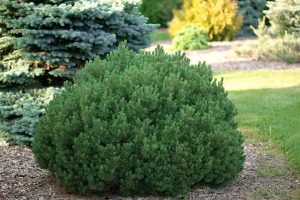
A shrub with a dense, rounded growth habit is the mugo pine. It makes a great little evergreen shrub. Mugo pine plants exhibit a great deal of variety in shape and vigor. The best varieties are those that are compact and have many stems. Due to its unpredictability, growing it as a single plant is preferable instead of in large quantities. It can require pruning to keep up its desired growth pattern. Pine needle scale can affect Mugo pine.
Spruces
The spruces' needle-like foliage has a four-angled cross-section rather than being flat like most conifers, which only produce one needle at a time. The persistent leaf bases on the twigs after falling needles help identify spruces.
Since spruces are native to cool regions, most of Missouri is not a good place to grow. Only well-drained soils should be used for their planting. Young trees have symmetrical growth patterns and abundant foliage, which make them appealing. The four spruces discussed in the following section are the ones most frequently found in nurseries.
Norway Spruce

One of the spruces with the quickest growth rates is Norway spruce. The side branches of an older tree become horizontal with a slight upward bend near the tip. The tree appears graceful as secondary branches hang downward from the main branches. When they are formed, the vast cones, the largest of all the spruces (4 to 6 inches long), is an additional draw.
Black Hills Spruce
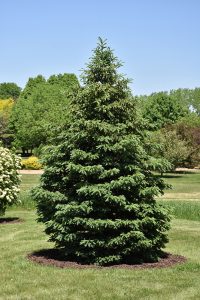
One of the hardiest spruces is the slow-growing, compact Black Hills spruce. The most beautiful feature of this plant is its lush, blue-green-to-green foliage.
Dwarf Alberta Spruce
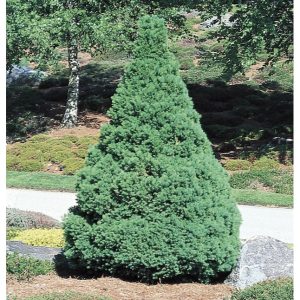
The little conical-shaped Alberta spruce is a small tree. It rarely needs pruning and grows quite slowly. It looks appealing because of the lush, bright green foliage. Under Missouri's environment, it rarely grows larger than 4 to 5 feet. Alberta spruce is mainly utilized as a novelty specimen plant and is rarely used in straightforward landscaping. Mites frequently attack the plant when it is grown beneath eaves where it is protected from rain.
Colorado Blue Spruce
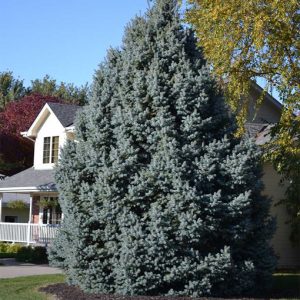
One of our most potent accent plants is the blue spruce. Anywhere it is planted, it sticks out due to its rigid growth habit and unique color. It is challenging to situate this tree in a landscape because of its prominence. For accent, it works best when utilized as a single specimen. Blue spruce typically costs more and grows more slowly than green ones. Because of our soils and climate, it is one of the most challenging conifers to cultivate. It is prone to several fungus- related diseases.
Hemlock
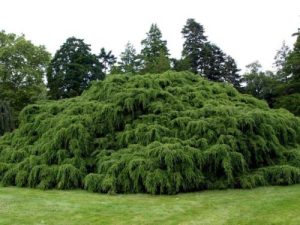
Hemlock, one of the needled evergreen trees with the most grace and beauty, requires wet, well-drained soil to grow well. It should be shielded from the wind and prefers some shade. Although it is simple to transplant, proper soil is necessary. Hemlock is one of the better- needled evergreens for growing as a hedge because it can resist near shearing.
Juniper
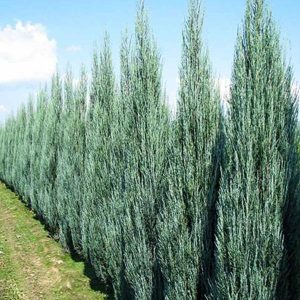
Because they are among the best acclimated, junipers are among the most popular evergreens produced in Missouri. They are more resilient than evergreens in hot, dry, poor soils. For optimum growth, junipers require direct sunlight. None of the junipers will grow on soggy, poorly drained soil or in areas with a lot of shade.
Juniper comes in various sizes and forms, with hundreds of different types to pick from. It might be yellow-green, green, blue-green, gray-green, or silver in color. Due to the proliferation of juniper types, many names have become muddled. They can be split into three main landscape- use categories: prostrate, spreading, and upright.
Fir
When fir needles fall from the twig, they leave a flat, round scar. While the cones of the majority
of other conifers droop downward, those of firs are carried upright. The only fir frequently grown
in Missouri is the Concolor fir.
Concolor or White Fir

The concolor fir's leaves color and basic tree form resemble those of the blue spruce. It has been adjusted to the state's northern third. It might be preferable to blue spruce due to its higher pest and disease resistance. Generally, we don't advise it for the state's other regions.
Conclusion
All evergreens have difficulty with winter dryness. Wintertime conditions that make it difficult for roots to replenish moisture as quickly as it is lost, such as cold or frozen soils, may cause the evergreen foliage to lose moisture. If the summer or fall has been very dry, thoroughly water the area surrounding the plants in late November to ensure sufficient moisture as they enter the winter. This will assist in avoiding the issue. Less winter-resistant evergreens should be planted in locations shielded from the sun and wind throughout the winter to avoid winter damage and guarantee their survival.
Only fertilize evergreens after they have experienced at least one growing season to establish themselves. Fertilizer is unnecessary for plants with proper growth and decent color. Fertilizers may help plants weakened by pests, illnesses, bad drainage, or infertile soil. Fertilizer should be applied, if necessary, between mid-October and mid-March.

